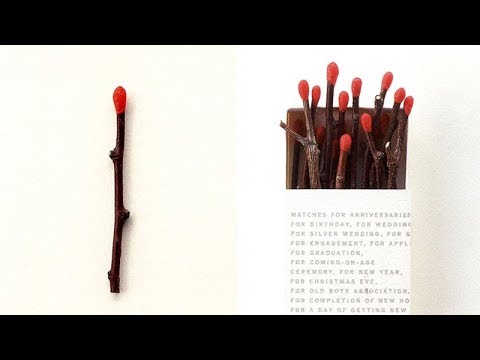
“The purpose of design is to search for an essential quality in things.” Meet the internationally acclaimed master designer, whose name has become synonymous with the changing face of contemporary Japanese design – Kenya Hara. In this extensive video, he talks about the concept of “no design” and creating from the Japanese mentality.
While studying at university, Hara’s interest in moulding developed into an interest in the philosophy of design, which became the foundation of his design: “The human wisdom behind the creation of a thing.” He feels that “global culture” doesn’t exist, but that the local culture in which we grew up shape us, and that “providing a local culture to contribute to the global context is what it means to enrich our world.” Visiting other countries has made Hara more aware of Japan and how to translate Japanese culture into a universal language: “I have to take the Japanese locality and digest it for the global language in order to present it in a global context.” When designing for Muji, and conveying this design to a global market, he realized that the Western idea of simplicity was similar to the Japanese idea of emptiness. This concept of emptiness became key, and was furthermore reflected in our perception of – and sensitivity towards – white: “I discovered the concept of white that lies next to emptiness.” This realization consequently resulted in a book series that Hara is working on, which through 100 essays explores the concept of white.
“Its simplicity should be gorgeous without a feeling of inferiority.” Hara argues that design’s intention shouldn’t be obvious, but rather “a suitable thing prepared for people without them noticing it.” On the subject of “no design”, which is at the core of Muji, this isn’t about a lack of design, but about “keeping design’s intention out as much as possible.” Muji, which Hara describes as a concept or ideology rather than a product design, was created as a sort of antithesis at the height of Japan’s economic wealth in 1980, and was consequently scrapped of useless things, rendering the products simple but by no means mediocre: “This is something very Japanese, placing value on austerity. So I wanted to create something out of the Japanese mentality and MUJI was born.” In continuation of this, communication, according to Hara, isn’t about assuring others that you know things, but rather about sparking curiosity: “The momentum of communication shouldn’t move people into the known but rather make people feel as if they saw it for the first time.” If people get the feeling they already know things, “the deepening of interests stops there.”
“It’s time for us to think calmly about how humans will change.” On the subject of technology, Hara comments, “the time of humans making tools has ended. And now we are entering a new era where tools create humans.” He believes that new technologies and environments will change the human being in the future, but is unsure whether this will be for the better or the worse. In continuation of this, Hara argues that when facing problems or obstacles – such as Japan’s decreasing birth rate and how to combine technology and traditional culture – it is possible to find solutions as long as the problem is apparent: “The worst thing we should fear is when problems are not clear to us.”
Kenya Hara (b. 1958) is a Japanese graphic designer. Since 2001, Hara has been the art director of Muji, Japan’s retail chain for household products (sometimes dubbed ‘the Ikea of the East’) founded in 1980, and aims to let its minimalistic products speak louder than the advertising around it. Over the years, he has worked for major Japanese clients such as Art Setouchi Triennale, Kenzo and Tsutaya Books. In 1998 he designed the opening and closing ceremonies of the Nagano 1998 Winter Olympics. Hara, who is also a professor at Musashino Art University in Kodaira, Japan, has received several prestigious awards including the JAGDA New Designer Award (1990), the Yusaka Kamekura Design Award (2001), the Tokyo ADC Grand Prize (2003) and three JAGDA Awards in 2013, 2014 and 2015. Hara is also the author of numerous critically acclaimed books, including the design bible ‘Designing Design’ (2007), which muses on the concept of emptiness in design aesthetics and philosophy. During his career, Hara has also produced numerous successful exhibitions aimed to widen people’s perception by proposing experimental objects that arouse senses, e.g. ‘Re-Design: The Daily Products of the 21st Century’ in 2000, ‘Architecture for Dogs’ in 2012 and ‘Subtle’ in 2014. He lives and works in Tokyo.
Kenya Hara was interviewed by Marie d’Origny Lübecker in Tokyo, Japan in October 2017.
Camera: Yudai Maruyama
Edited by: Klaus Elmer
Produced by: Christian Lund
Copyright: Louisiana Channel, Louisiana Museum of Modern Art, 2018
Supported by Nordea-fonden
source